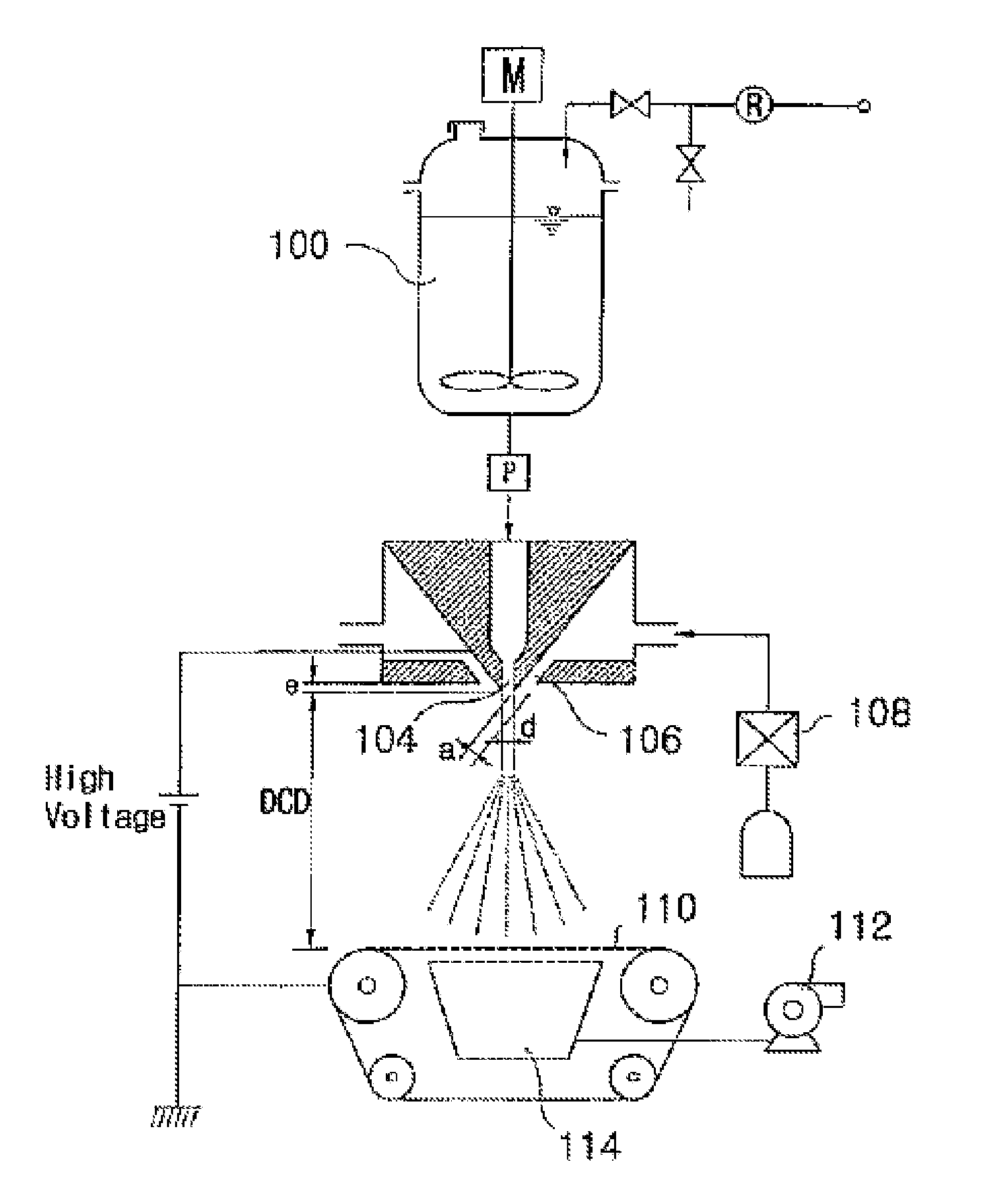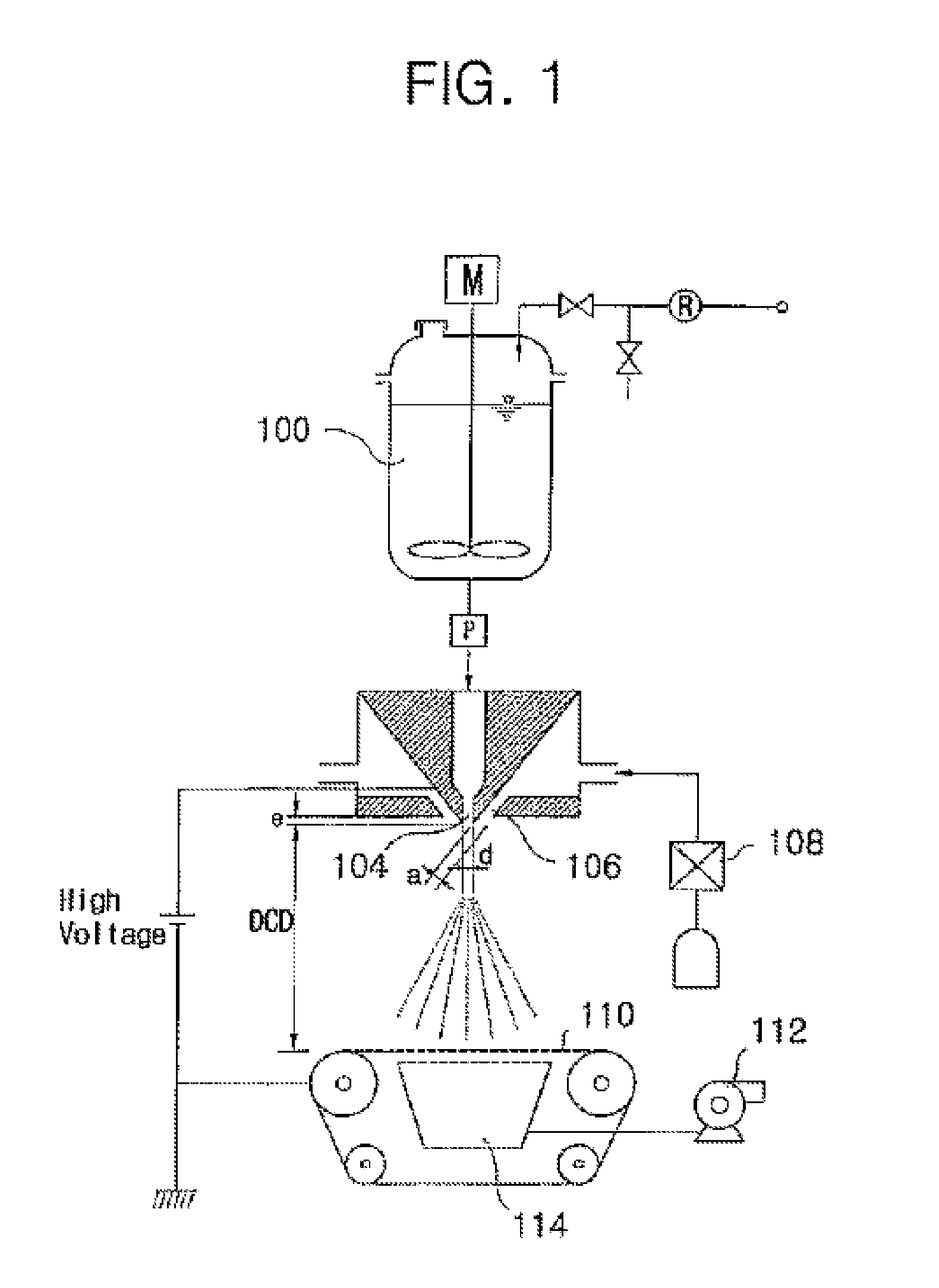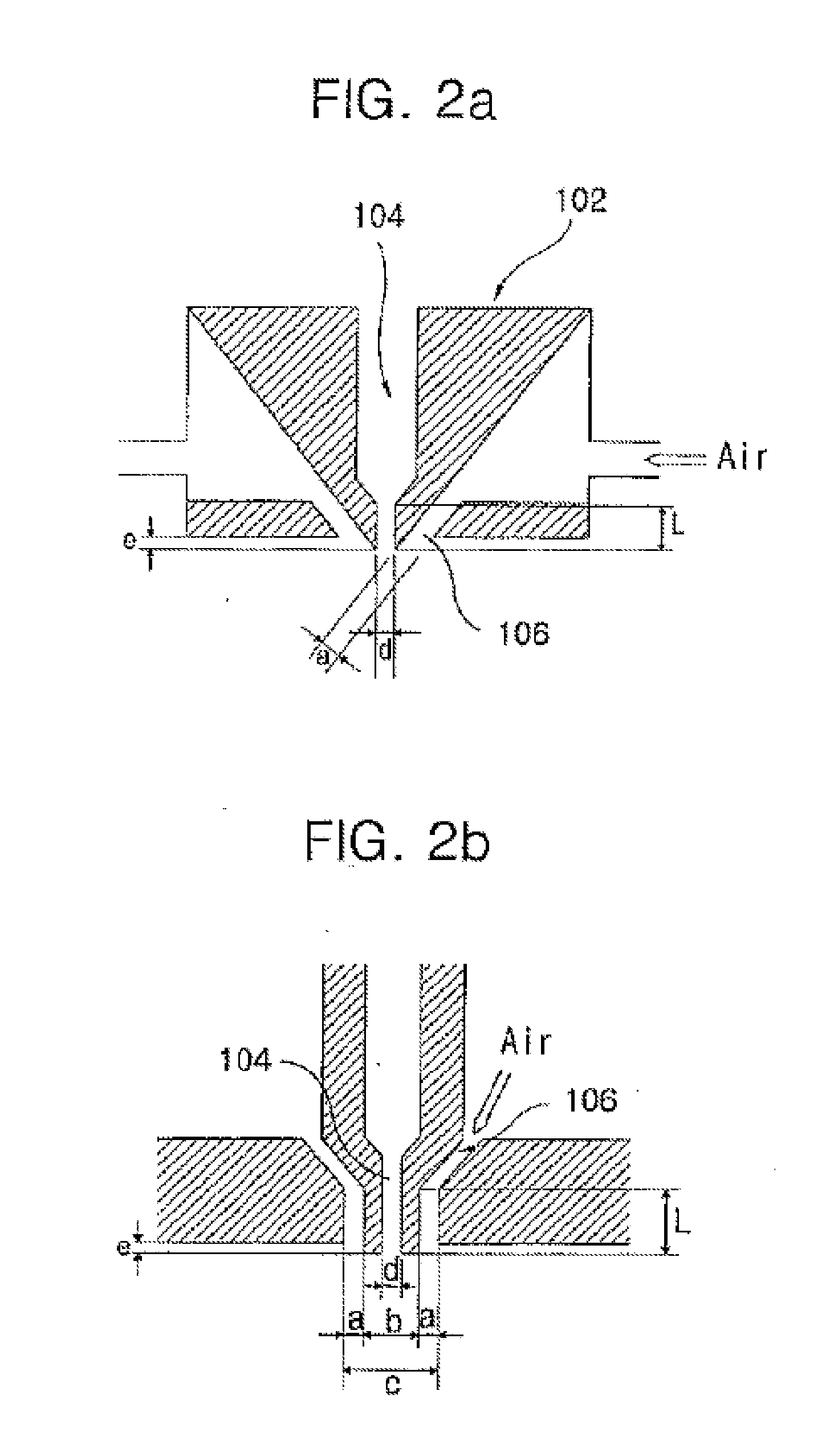Electroblowing of fibers from molecularly self-assembling materials
a technology of molecular self-assembling materials and electro-blown fibers, which is applied in the direction of weaving, transportation and packaging, yarn, etc., can solve the problems of limiting the utility of this technique, material and processing techniques are difficult, and the fibers are smaller than 1.0 micron in diameter
- Summary
- Abstract
- Description
- Claims
- Application Information
AI Technical Summary
Benefits of technology
Problems solved by technology
Method used
Image
Examples
example 1
Representative Synthesis of a Self-Assembling Copolyesteramide
[0044]An amide diol ethylene-N,N″-dihydroxyhexanamide (“Diamide-diol”) monomer batch is prepared by reacting 1.2 kg ethylene diamine (EDA) with 4.56 kg of ε-caprolactone under a nitrogen blanket in a stainless steel reactor equipped with an agitator and a cooling water jacket. An exothermic condensation reaction between the ε-caprolactone and the EDA occurs causing the temperature to rise gradually to about 80 degrees Celsius (° C.). A white deposit forms and the reactor contents solidify, and the stirring stops. The reactor contents are cooled to 20° C. and are allowed to rest for 15 hours. The reactor contents are heated to 140° C. at which temperature the solidified reactor contents melt. The liquid product is then discharged from the reactor into a collecting tray. A proton nuclear magnetic resonance study of the resulting product shows that the molar concentration of Diamide-diol in the product exceeds 80 percent. Th...
example 2
Melt Electroblowing the 5000 Mn Self-Assembling Polymer from Example 1
[0047]An electroblowing apparatus as described in WO 03 / 080905A is used to produce sub-micron fiber and nonwoven web from a polymer fluid, including melt and solvent-based solution. This apparatus is illustrated in FIG. 1 described below. The apparatus includes a feeding system for feeding a stream of a polymer fluid comprising either a polymer melt or a solution from storage tank 100 to a spinning nozzle 104 (e.g. a “die”) within a spinneret 102 to which a voltage is applied and through which the polymeric fluid is discharged. A compressed gas that is optionally heated in a heater 108, is blown through a so-called gas knife, 106 that are disposed in the periphery (depending on die geometry) of spinning nozzle 104. The gas blows the gas stream which envelopes and forwards the MSA-containing fluid and aids in the formation of the fibrous web, by stretching the nascent forming fibers that are collected onto grounded...
example 3
Solution Electroblowing of the 7200 Mn Self-Assembling Polymer from Example 1
[0048]The same basic apparatus used in Example 2 is used to electro-blow a 12 weight percent solution of the 7200 grams / mole Mn self-assembling polymer from Example 1 dissolved in chloroform. A porous fibrous scrim of polypropylene is placed on the collector to give a die to collector distance of approximately 25 centimeter. The electrical potential is set to approximately 40 kV. The gas flow rate (compressed air used as gas) is 150 SCFH. The gas temperature is set to room temperature, as is the polymer solution temperature. The solution flow rate is set to approximately 0.1 grams / minute. The gas flow rate (compressed air used as gas) is 50 SCFH. The process is run and a nonwoven web is collected.
PUM
 Login to View More
Login to View More Abstract
Description
Claims
Application Information
 Login to View More
Login to View More - R&D
- Intellectual Property
- Life Sciences
- Materials
- Tech Scout
- Unparalleled Data Quality
- Higher Quality Content
- 60% Fewer Hallucinations
Browse by: Latest US Patents, China's latest patents, Technical Efficacy Thesaurus, Application Domain, Technology Topic, Popular Technical Reports.
© 2025 PatSnap. All rights reserved.Legal|Privacy policy|Modern Slavery Act Transparency Statement|Sitemap|About US| Contact US: help@patsnap.com



